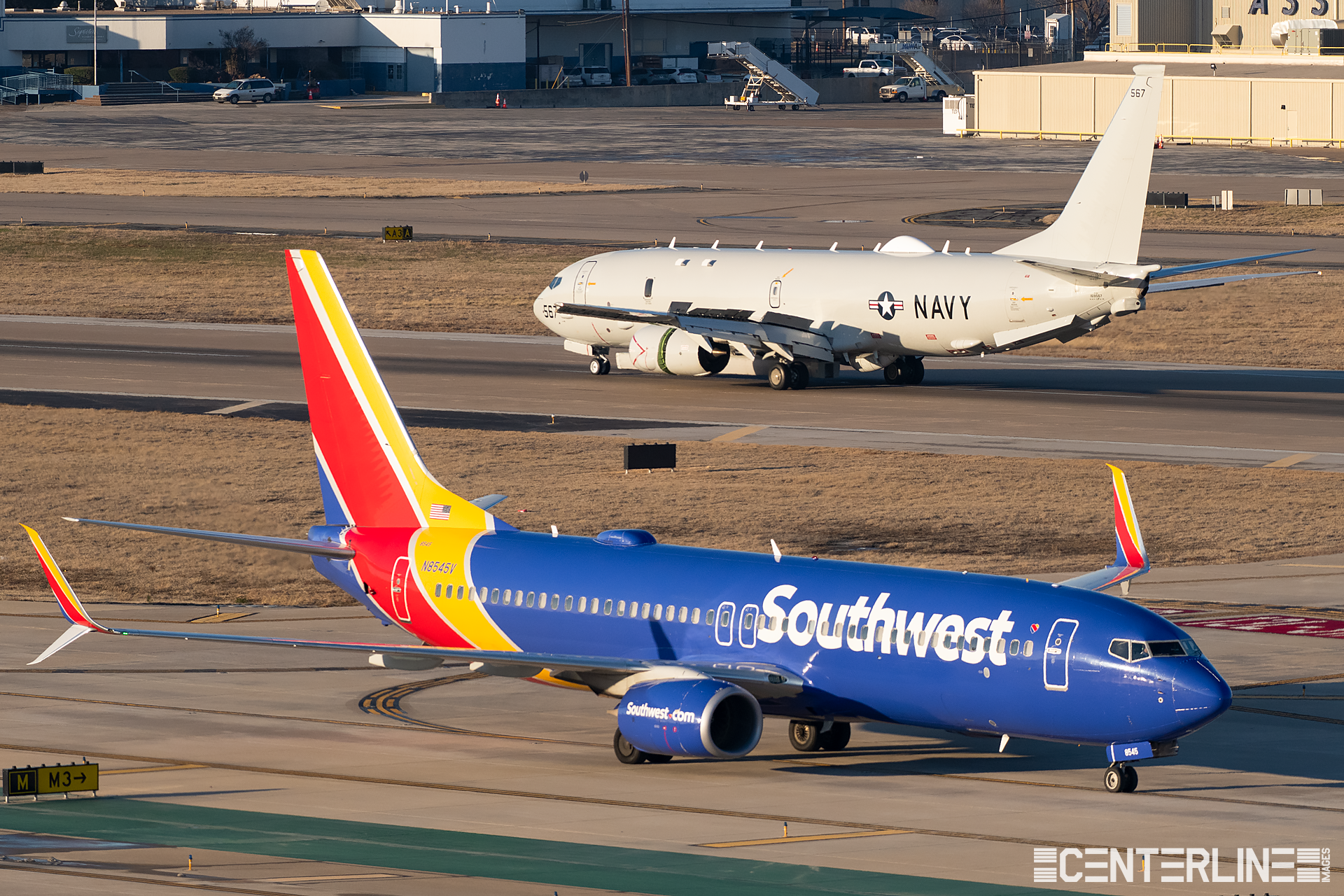A New Look For The Dallas Poseidon
"SHINR02" touching down on runway 31R at Dallas Love Field back in February after a training sortie over the Gulf of Mexico. This Poseidon is part of the secretive Dallas Love Field-based US Navy detachment BUPERS SDC Dallas/NAWC-23 and appears to have received a new dorsal fairing modification near the tail! The following information is all publicly accessible online.
The tight-lipped Dallas, Texas-based unit plays an important role in test and evaluation of advanced sensor technology such as Raytheon's AN/APS-154 Advanced Airborne Sensor (AAS), which can be seen in these photos slung underneath the aircraft. According to the US Navy, the huge pod was first flown on the P-8A Poseidon in 2015.
The AAS is a state-of-the-art radar used on the P-8 Poseidon maritime patrol aircraft. Developed by Raytheon, the AAS is an upgrade to the AN/APS-149 Littoral Surveillance Radar System (LSRS), which was designed to provide multi-function target detection and tracking as well as high-resolution ground mapping at standoff ranges covering land, littoral, and water areas.
The AAS boasts a double-sided AESA radar, offering near 360-degree coverage and the ability to simultaneously scan, map, track, and classify targets. Moreover, the radar contains a moving target indicator (MTI) that can detect, classify, and track targets on land and at sea at the same time. Synthetic aperture and inverse synthetic aperture radars generate clear, high-quality imagery of inland and ocean areas, allowing P-8 crews to profile vessels from long distances and in adverse weather conditions. The AAS can even detect the faint wakes left by submerged submarines on the surface of the ocean.
The AAS is a game changer for the U.S. military. Once a hostile vessel is identified, targeting information can be sent to another armed platform and a networked weapon can be guided to the target through a data link. As for the rest of bumps and and antennas, I could only speculate as to how they play a role, but I'll refrain.








